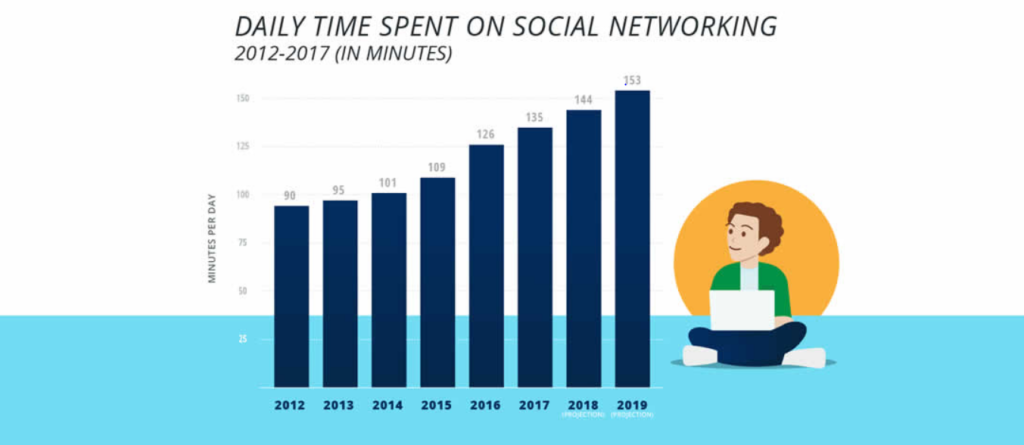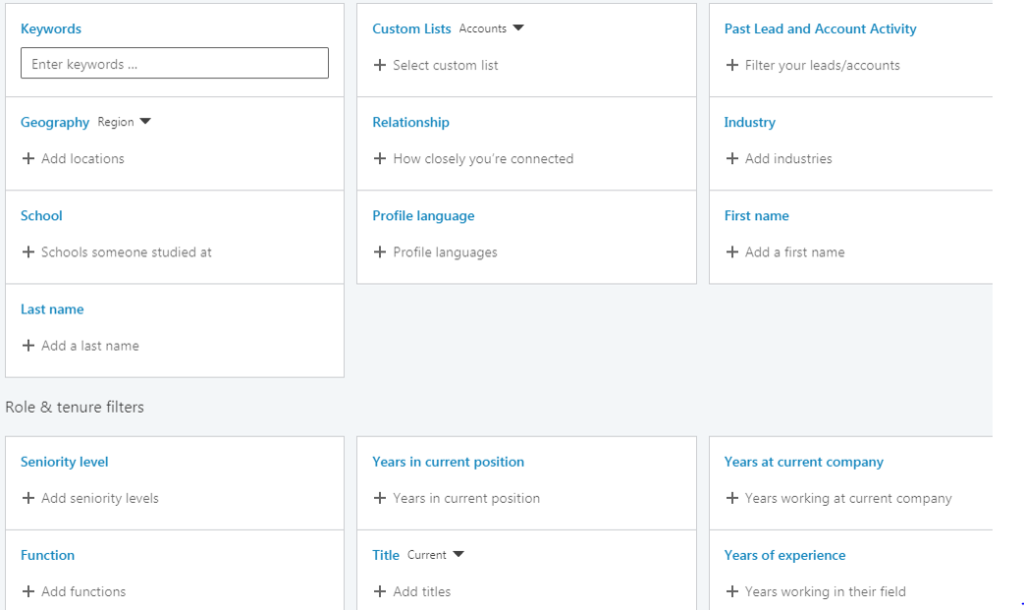Estimated Reading Time [est_time]
You are what you share
78% of salespeople engaged in social selling are outselling their peers who aren’t.*
*hubspot
If there is one thing that every sales team should be implementing in 2020 it’s this… SOCIAL SELLING.
Social selling, I promise, is much more than just a buzzword, but what is it exactly, and how can you improve your sales success by implementing this simple yet effective sales strategy?
What worked then, might not work now
It’s no secret the way that people buy has changed, therefore it makes sense to consider the possibility that the way we sell must also change.
Historically the traditional channels have included the telephone, face to face and email. Most people spend some time every day on social media so why wouldn’t you use it to engage with your buying personas?

Whilst channels like email and phone all have their place, it can take on average 8 attempts to reach a decision-maker on the phone and emails can be easily deleted without even being read – according to stats by SuperOffice 90% of decision-makers said they “never” respond to cold calls and 92% delete emails without even reading them.
Think about the channels your customers will be using in order to capture their attention and start a passive approach – “The art of fighting without fighting”.
“Supreme excellence consists in breaking the enemy’s resistance without fighting.” –Sun Tzu
Not every social channel will be suitable for your audience so it’s important to spend some time following your customers and understanding their channels of preference for their own promotions as well as building your buying personas in order to reach the right audience.
According to LinkedIn, over 90% of an enterprise-sized organisation come from at least six buying personas so it’s essential in this day and age to build up a picture of the decision-makers involved in the sale, from the influencers through to the ultimate decision-maker that signs the cheque.
Let’s take a look at the 4 steps to successfully implementing this into your daily sales activity.
4 steps to success
The first step in social selling is creating a personal brand, and LinkedIn offers you the perfect platform for doing this. Essentially it’s about how you showcase yourself to your target audience and potential customers. People buy into people and not companies, they don’t buy what you do, they buy why you do it – meaning your personal profile can be 10x more powerful than a company profile.
92% of buyers are willing to engage with a sales professional who is a known industry thought leader.
The most important thing to keep in mind when creating your brand is authenticity, the idea being your personal brand is there to create a sense of trust and respect, therefore you need to be true to yourself and accurately reflect the skills, experience and beliefs in order to build upon this.
Your profile is one of the key things that will set you apart from your competitors, and if it accurately shows who you are and what you do then your audience will see the value in connecting with you.
“Be yourself. Everyone else is already taken.” – OSCAR WILDE
So what does a really well crafted LinkedIn profile look like? According to LinkedIn, there are many ways to enhance your profile and distinguish yourself amongst your peers. Let’s take a look at the most effective ways of doing this.
A picture paints a thousand words. In this case, it’s certainly true, LinkedIn’s research shows that a profile that includes a professional profile picture is 14 times more likely to be viewed by others.
Optimise your headline. The LinkedIn community is 546 million users. By creating a headline which succinctly sums up your role and approach you can greatly increase your visibility within your network and increase your chances of appearing in relevant searches. Use your headline to grab your reader’s attention and encourage them to read further.
Build trust. Start to position yourself as an expert, people need to see the value in connecting with you. In order to build trust, you need to be seen as a thought leader within your industry.
The easiest way to do this is to think about your decision-makers, who are you speaking to through your profile. Define your audience before you create your summary as this is your chance to speak to them directly and explain why you are relevant to their needs or pain points and challenges.
CTA and contact details. So what happens once a relevant prospect has landed on your page and read as far as your summary, it’s important to think about what you want your reader to do next. Ask them to connect with you within your summary, ask them to contact you directly and provide contact details.
Why stick with the one, according to LinkedIn some of the most powerful LinkedIn profiles have several calls to action to help move the reader closer to the ultimate goal of contacting you.
Building your network
Right, moving onto the next step, let’s take a look at the target audience. How do you go about designing your target audience? I think it makes sense to start with the needs and pain points. Think about what problems your target customer suffers from in their day-to-day role, and how your product or service can solve those issues for them. By identifying the needs, expectations, and pain points of your target audience you are are going to be able to understand them better and therefore communicate more effectively.
Remember you don’t need to reach everyone, just your ideal customer.
Personas include all the important target audience demographics like age, gender, roles, responsibilities and location. LinkedIn Sales Navigator offers you some very targeted list building filters pictured below.

Content to educate, engage or excite
So, you’ve created your personal brand page with LinkedIn, you’ve created your different buying personas based on your target audience, current customers and competitors. You now need to start communicating with them.
Content is key for the next step in social selling, without it you really aren’t going to get very far. Pushing out relevant and topical content to your target audience is going to help create brand awareness (for your personal brand) this, in turn, will help to increase your chances of connecting with a prospect or client.
By positioning yourself as a thought leader through the content you share within a particular industry your credibility within your industry will increase and you will find it much easier to build a community around your personal brand.
So what is there to talk about?
53% of customer loyalty is driven by a salesperson’s ability to deliver unique insight, easily done through social media.
There are loads of different ways of communicating with your target audience, I was recently on a webinar hosted by the sales platform Leadfeeder. We were advised to think about one of three things when writing a piece of content – is it aimed at educating, engaging or exciting your audience. Aim for one of these three things and you won’t go far wrong.
Take a look at the different ways you can share content on LinkedIn, there are how-to guides, opinion pieces, industry news, achievements (both personal and company-related) events, announcements, life and business lessons as well as knowledge and skill lessons.
It’s important to try and find the right balance and understand what works best for you and your industry. As previously mentioned it’s vital your content comes across as authentic – not all content has to teach you something and if your clever you can use your content to qualify your audience – what are the pain points and how have you helped your customers overcome them?
The golden rules for sharing content
- Consistency is key – post consistently and aim for at least 2 -3 times per week.
- A/B Test – look at the data and engagement of your posts – what days of the week get a better level of engagement, what times of the day?
- Value, value, value – always be thinking about where you can add value.
- 1 of 4 – only 1 in 4 posts should mention your company.
- Be a resource – which will enable you to build an audience.
- Planning is key – create a social content calendar and try to plan three months in advance.
- Focus on the pain – what do your prospects struggle with? Build content around that and you might find that your prospects start coming to you for advice.
- Use a natural tone – avoid using buzz words and keep your paragraphs short and succinct, avoid waffle.
The outreach
Now comes the important part, the outreach, you’ve found a prospect that matches one of your buying personas and they’ve connected with you – now what do you do?
Firstly – don’t sell!
It goes against the grain right? You’re dying to blurt out exactly how you can help this prospect with your product and service.
Don’t.
Instead, take some time to follow your prospect – what are their interests? What do they post about? What are their specialities? By following them first you will be able to send them a much more personal email or connection request.
By building up a picture of who they are, how they communicate and what interests or excites them, you are in a much stronger position to actually engage with them.
Nurture, Nurture
It doesn’t end here, social selling should be seen as a continuous strategy, not one to be implemented and put down.
It’s important to remember that when you start interacting with someone on social it’s still a conversation. Whether you are connecting with them, sharing a post, commenting or liking an article it’s still a conversation. Make sure you listen.
Every day you should be thinking about what relevant information you can share, or liking posts and articles from others. When sharing content from another user, be sure to tag or thank them for their initial post.
If you have any questions or would like to discuss this further, I can be reached on LinkedIn @digitalclarity







